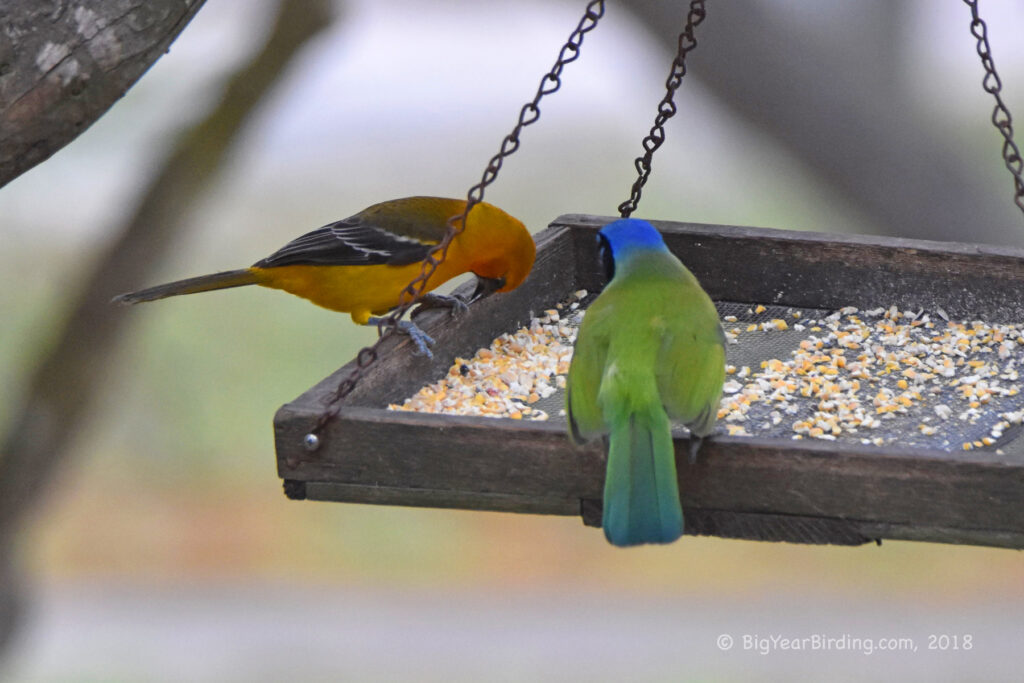
The Altamira Oriole (Icterus gularis) is a striking bird found primarily in Mexico and the southwestern United States. It is a relatively large oriole, measuring between 8.5 to 9.5 inches in length and weighing between 1.4 to 1.8 ounces. The male and female have similar plumage, which consists of a bright orange-yellow body, black wings, and a black mask around the eyes. The bird’s wingspan ranges from 12 to 14 inches.
One of the most distinctive features of the Altamira Oriole is its loud and melodious song, which is often heard before the bird is seen. The song is a series of whistles and trills, often repeated several times in a row. The bird’s call is also distinct, consisting of a sharp, metallic chirp.

The Altamira Oriole is a resident bird in Mexico, meaning it does not migrate. However, some individuals may occasionally wander north into the southwestern United States during the breeding season. The bird’s preferred habitat is riparian areas with dense trees, including mesquite, sycamore, and willow. It is also found in orchards, parks, and gardens.
The Altamira Oriole is primarily insectivorous, feeding on a wide variety of insects, including caterpillars, beetles, and grasshoppers. It also eats fruit and nectar, especially when insects are scarce. The bird’s breeding season is from March to July, during which time it builds a hanging nest made of grass, leaves, and bark. The female lays 3-5 eggs, which hatch after about two weeks.

Unfortunately, the Altamira Oriole is listed as a species of concern due to habitat loss and degradation. The bird’s population has declined in recent years due to deforestation, urbanization, and agricultural development. Conservation efforts are underway to protect the bird’s habitat and prevent further population declines.

